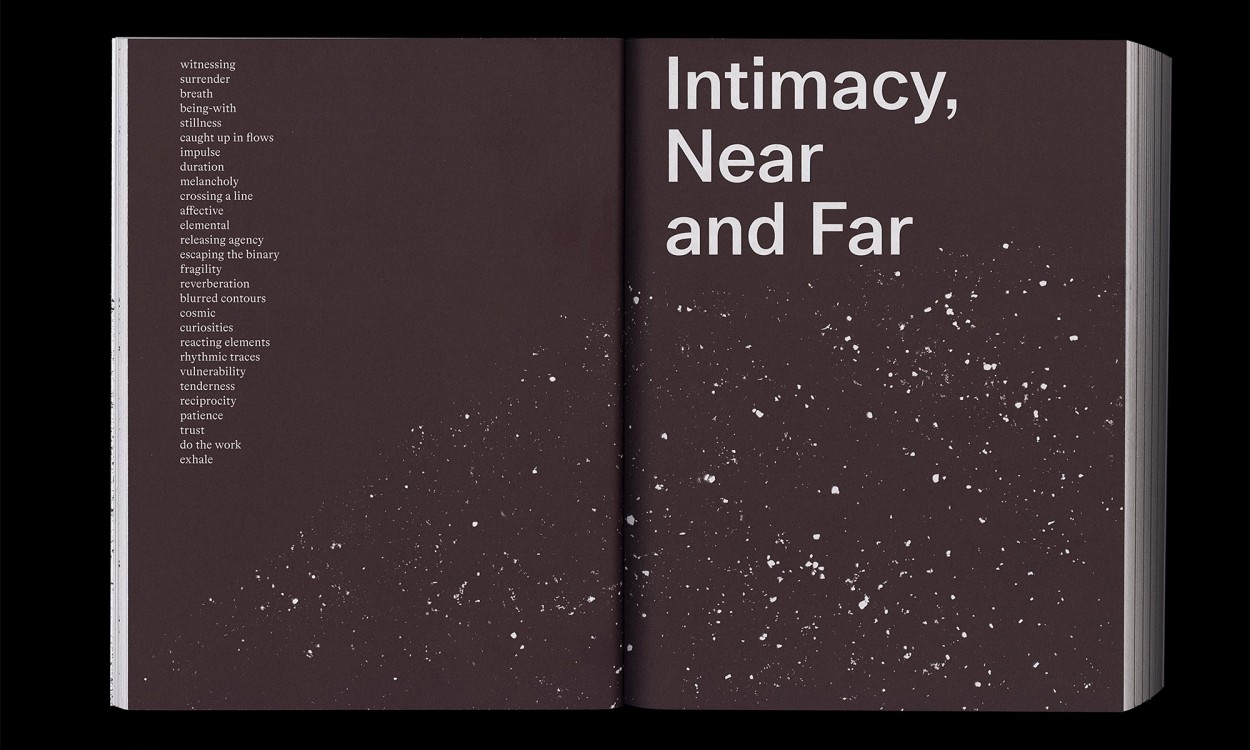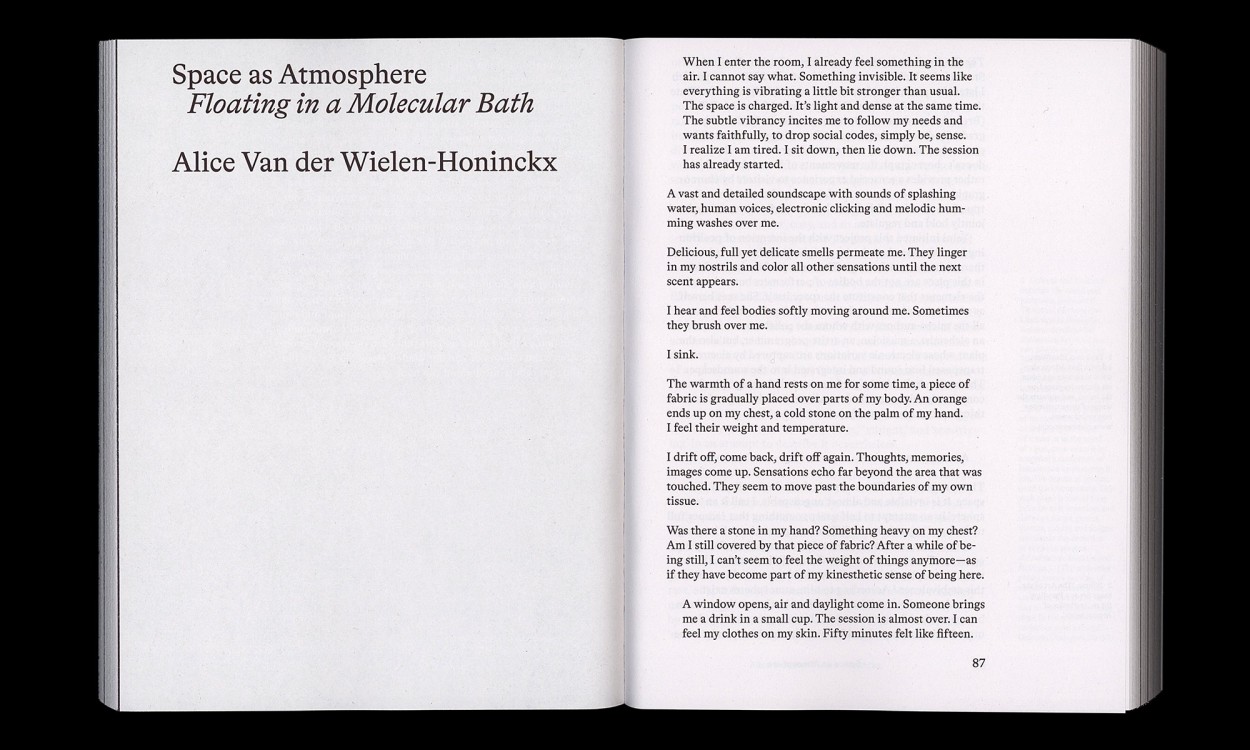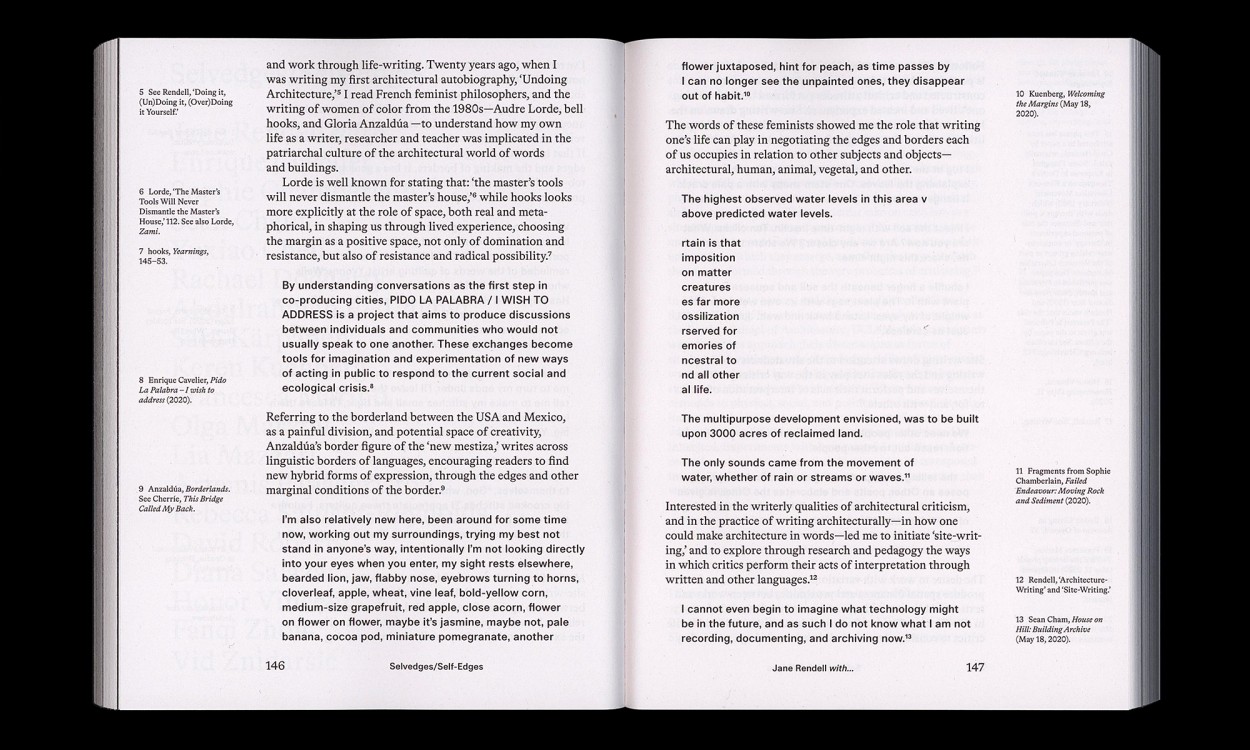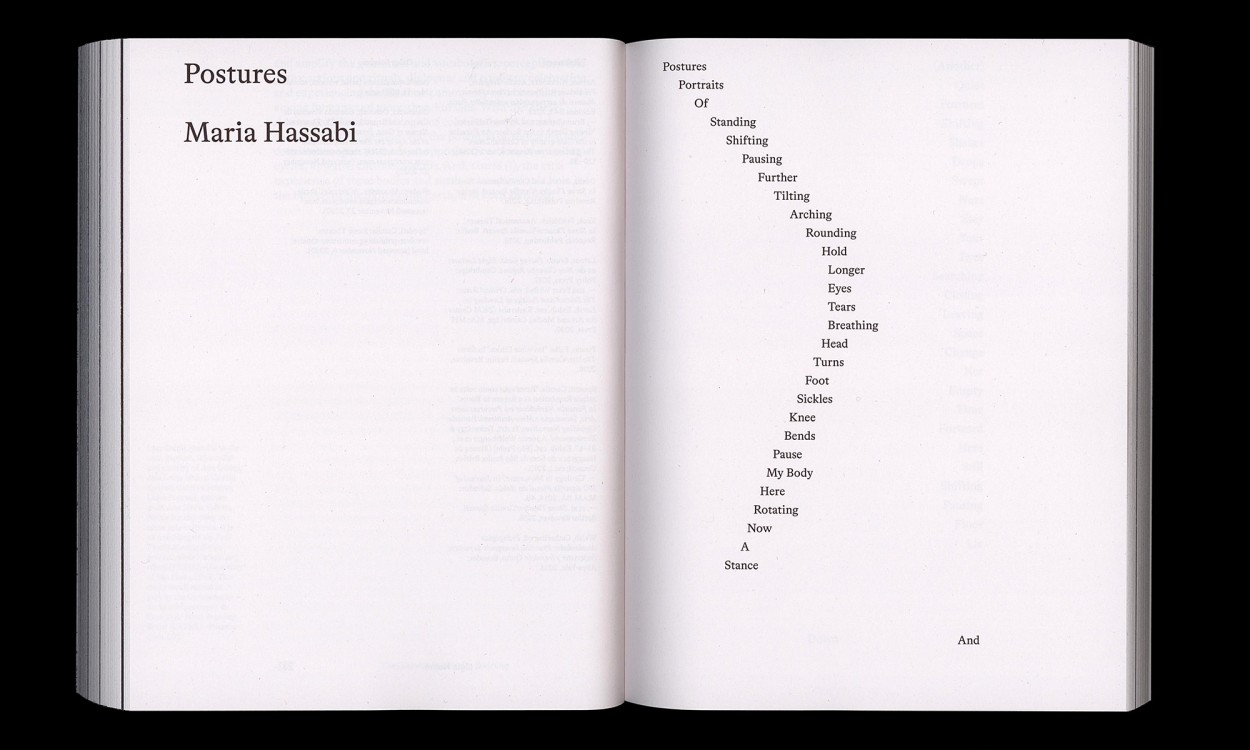Slow Spatial Reader
Chronicles of Radical Affection
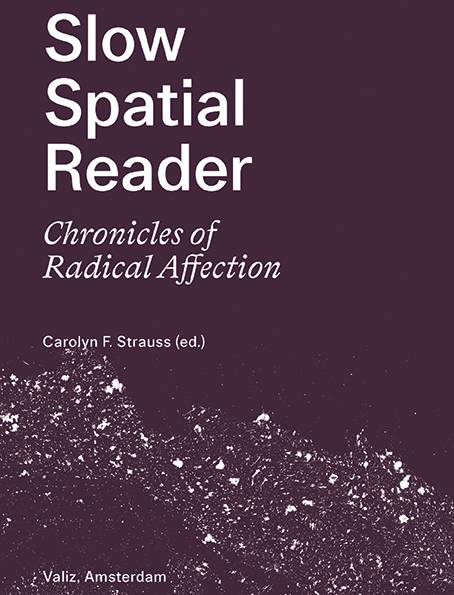
- A plea for slowness on different levels, ranging from individual to collective to global
- Successor of the successful Slow Reader (Valiz, 2016), in which — just like in this book — slow is the starting point for other rhythms, qualities, and scenarios.
- Trans-disciplinary, travelling through collective and individual power of imagination
Author/Editor: Carolyn F. Strauss
Contributors: Lara Almarcegui, Marijke Annema, Martina Buzzi, Nicolas Buzzi, Sol Camacho, Cave_bureau (Kabage Karanja and Stella Mutegi), Renske Maria van Dam, Chiara Dorbolò, Cocky Eek, Anna Maria Fink, David Habets, Ian Hanesworth, Maria Hassabi, Beate Hølmebakk, Saba Innab, Kū Kahakalau, Bronwyn Lace, Daniel Lie, Pia Lindman, Ruth Little, Megumi Matsubara, Ash McAskill, Kate Morales, Salima Naji, Ligia Nobre, Alessandra Pomarico, Maria Popova, Raqs Media Collective (Monica Narula, Jeebesh Bagchi, and Shuddhabrata Sengupta) Jane Rendell, Angela Sakrison, Cristine Takuá, Li Tavor, Alice Van der Wielen-Honinckx, Françoise Vergès, Sara Wookey
Design: Zuzana Kostelanská
Summer 2021, Valiz in collaboration with Slow Research Lab | supported by Prins Bernhard Cultuurfonds and Creative Industries Fund NL | Pb | 352 pp. | 21 x 16 cm (h x w) | English | ISBN 978-94-92095-97-8
Presentation on July 8th at Het Nieuwe Instituut, Rotterdam, that can also be followed via online livestream.
Slow Spatial Reader was read by MYCKET as part of the september 2021 edition of Site-Reading Writing Quarterly
Slow Spatial Reader offers a collection of essays about ‘Slow’ approaches to spatial practice and pedagogy from around the world. The book’s contributors are from twenty-four countries on five continents. Each one brings distinct philosophical and disciplinary approaches—from ‘spatial’ fields like architecture, sculpture, and installation, but also performative, somatic and/or dramaturgical practices—, exploring how we think about and engage with space at a range of scales, tempos, and durations. The essays chronicle projects and processes that amplify tangible and intangible qualities of spatial experience: reaching into the cracks of the body, probing the fuzzy borders of atmospheres, and extending out across both geographical and epistemological coordinates. The term ‘radical affection’ in the book’s title was coined to unite those diverse approaches in a call for tender acts of individual and collective imagination through which new forms of caring, connection, and resilience might emerge. Like its predecessor, Slow Reader (Valiz 2016), this new publication is intended to spur meaningful dialogue between disciplines and cultures, inspiring not only a different velocity of engaging the world but also critical shifts in consciousness that only Slow thinking and practice can provoke.

